Oh Tirana! Just how wonderfully unconventional you were, completely bonkers even, in the best way possible too. As any other capital city out there, one can easily find a ton of guides to Tirana, what to do there, where to stay, which restaurant to dine in etc. This will not necessarily be such a guide. After all, the things that I spent the most time doing there can be roughly put into three categories: eating good food, visiting decent museums, and just gasping at the sheer beauty of the city as I aimlessly wondered around its many streets. For food, do go ahead and check out THIS work of mine, and for museums, THIS is a good read. Hence, this article will simply be a love letter to my own wanderings around Tirana, the extremely quirky capital of Albania, adorned with as many photos as I could remember to take as I strolled around its often tree-lined streets. Since this is not really a guide, I will simply use some of my own photos as a starting point to write about a few random aspects of the city, so that the next time you are there, you too can have an idea or two about what the city offers (beyond its usual landmarks) and what it really is all about.
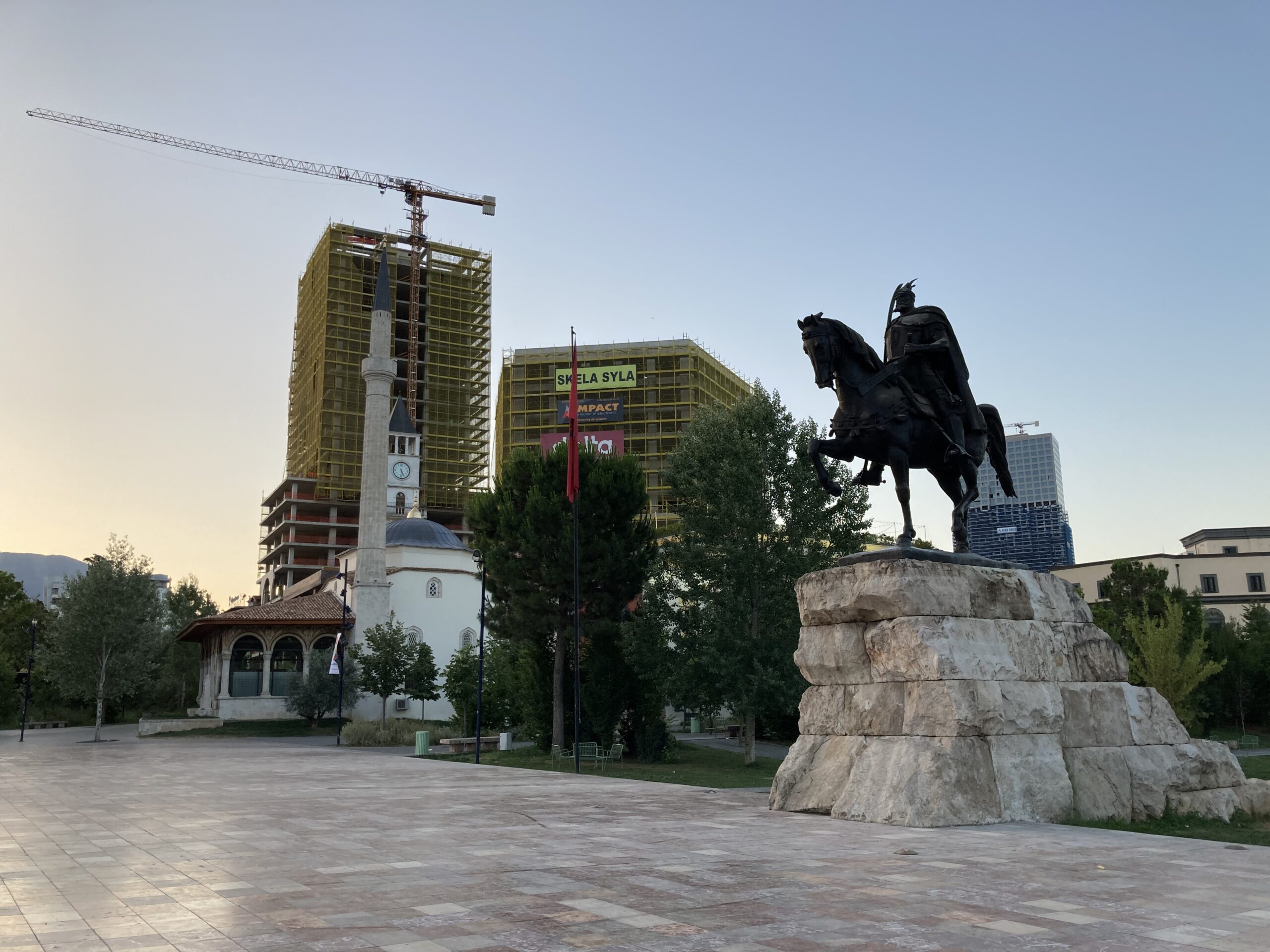
Home to around half a million people today, Tirana was merely a town of insignificance at the turn of the last century. When it was made the temporary (later permanent) capital of the new Albanian state in 1920, a plethora of architectural and developmental projects would be organized to turn the city into what it is today. Starting from such humble beginnings as that of a rather backwater rural Ottoman town and ending up being the extremely special and completely buzzing capital that it is today certainly took some time and effort. Anything from Zogist attempts to bring the city on par with its contemporary European counterparts to Enver Hoxha’s endeavours to fill it up with bunkers of all sorts helped change the cityscape dramatically. These different successive regimes and their own ideologies can be seen being reflected all around the city today, with communist-era bunkers being found in juxtaposition to Ottoman-era mosques, both of which are now shadowed by modern Albanian efforts to seemingly put a new skyscraper to every single street corner that the capital offers.
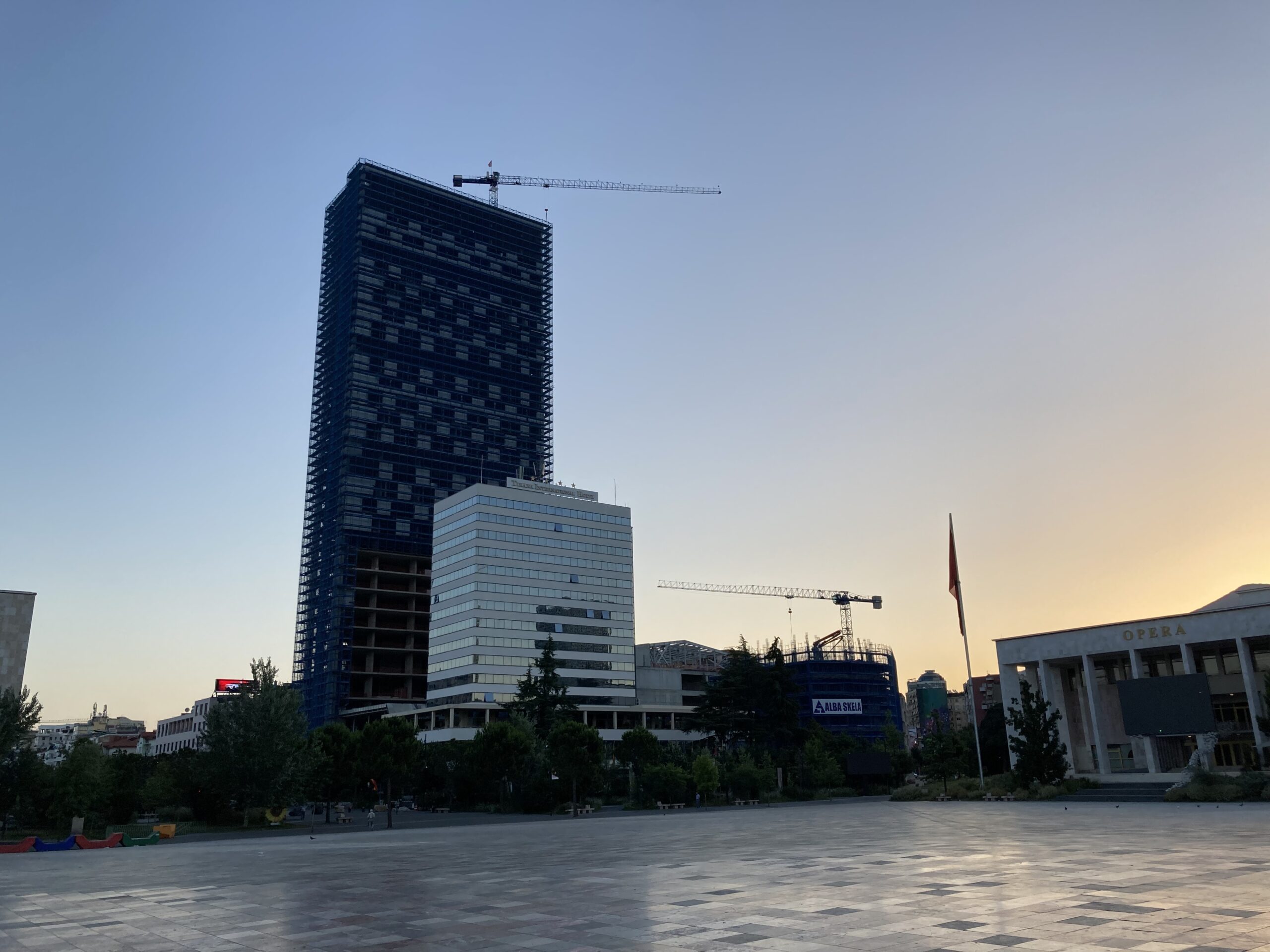
The recent attempts to rebuild the city is quite ferocious to say the least. It fully or partially destroys most of the remnants from the city’s communist era, whilst introducing these highly monolithic and frankly out-of-place skyscrapers all around it. The once quite prestigious Tirana International Hotel, now a relic of the past, is overshadowed by the much bigger and taller InterContinental Tirana Hotel that is scheduled to be open for business in a few years, likely 2025. It is important to note that I received different versions of this story depending on whom I asked. Originally, news from four to five years ago indicate that this would be an extension to the International Hotel itself, which sounds unlikely as the so-called extension is far bigger than the communist-era hotel itself. Please feel free to reach out to me if you know the exact story of what is going on there!
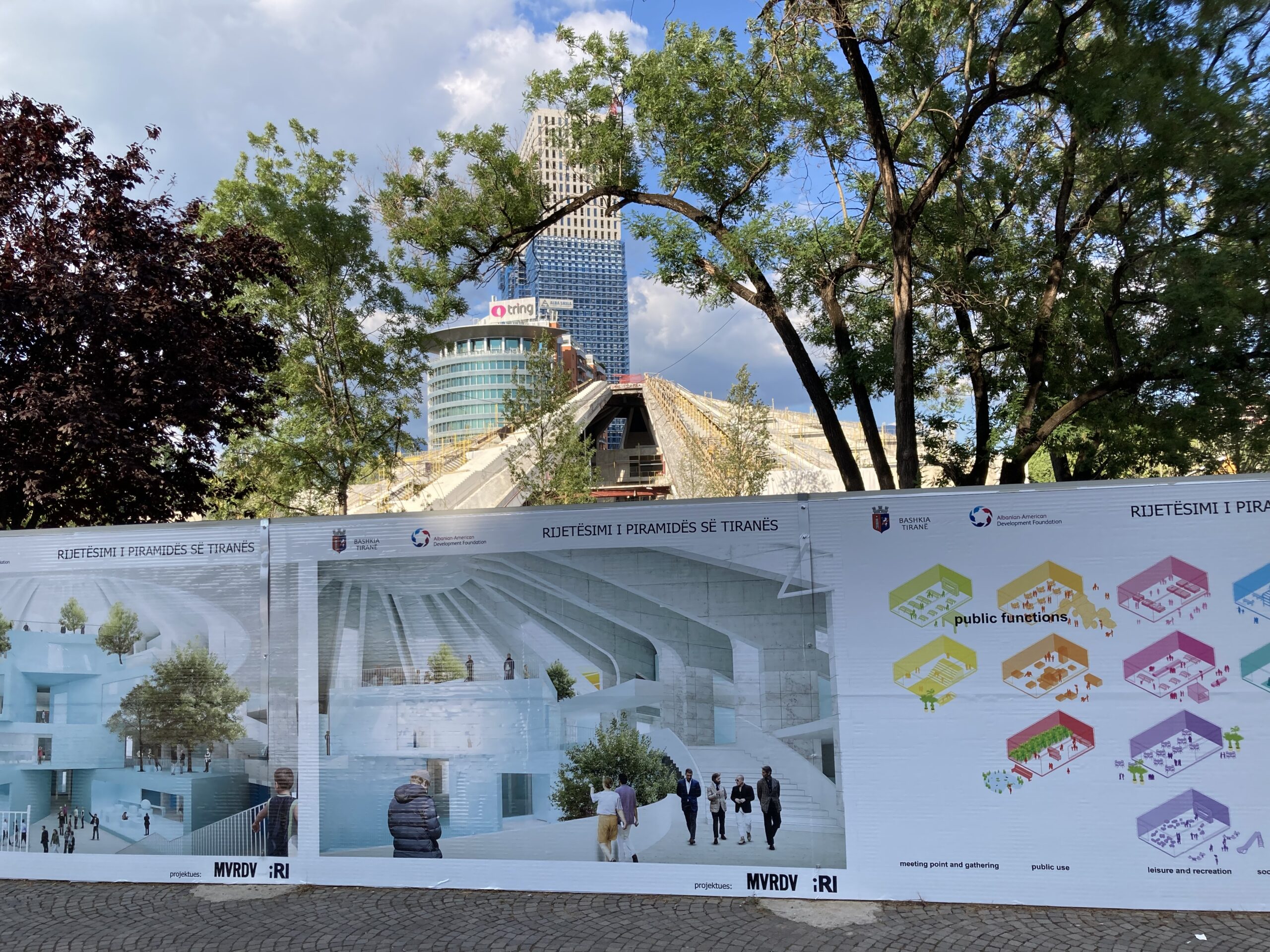
It should be clear by now that since the fall of communism in Albania, there has been this tendency to revolutionize the urban landscape with the so-called modern standards at the expense of the natural and historical foundations of the city’s already existing urbanity. I am quite aware that a lot of people in Albania are happy with this new arrangement, and most certainly appreciate this line of thinking. Structures like the infamous Pyramid of Tirana, a site that I wanted to visit for over a decade now, was often (unfortunately) mocked on the internet for being useless, and just overall “ugly.” What is “ugly” and what is not is certainly up to one’s own personal taste, but the Pyramid of Tirana was an original part of Tirana and its communist-era history, with its own unique shape and size. What is now planned to be built there on its foundations is anything but that. The plans for the new Pyramid of Tirana, some of which you can see in this photo look like any artsy building you can find in a Western European or North American city. I appreciate the effort on behalf of the architects to at least come up with a bit quirkier design to keep up with the rest of the city, but cannot help but wonder if simply keeping the original form of the pyramid would not have been better for preserving the “spirit” of the city a bit more.
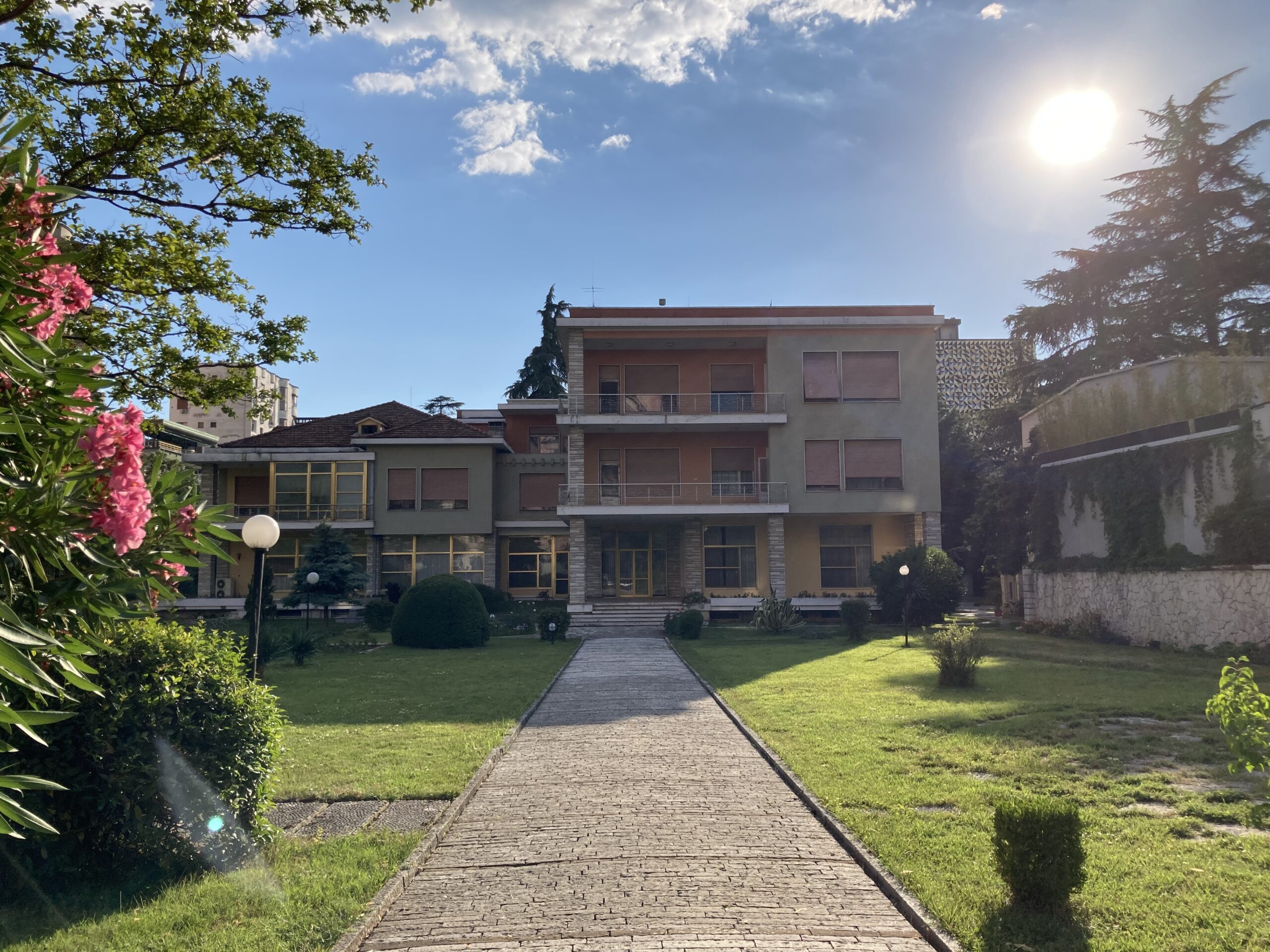
I can go on for hours when I start to rant about urban landscapes and just how similar looking they all are becoming these days due to a wave of “well we can build that too, and even bigger/better” idea that plagues the city planners’ minds all around the globe. I will cut it short here after noting something extra remarkable about Tirana’s own handlings of its affairs with its unique communist past. Photographed here is the former residence of Enver Hoxha, close to the city centre. Unfortunately, you cannot visit it, no one can to my knowledge and the plans to open it to public are quite vague to say the least. What you can do, however, is that you can enjoy some KFC that is found on the opposite side of the road to the entrance of this residence complex. Now I am not here to rouse any conspiracy theories or anything but finding such an American establishment that sits exactly on the opposite side of the entry to this former communist revolutionary’s home certainly rings some alarm bells as it most certainly looks like yet another homage to the “West’s” victory over the “East.” Make what you want of it yourself, though it is a bit too perfect to be a simple coincidence if you ask me.
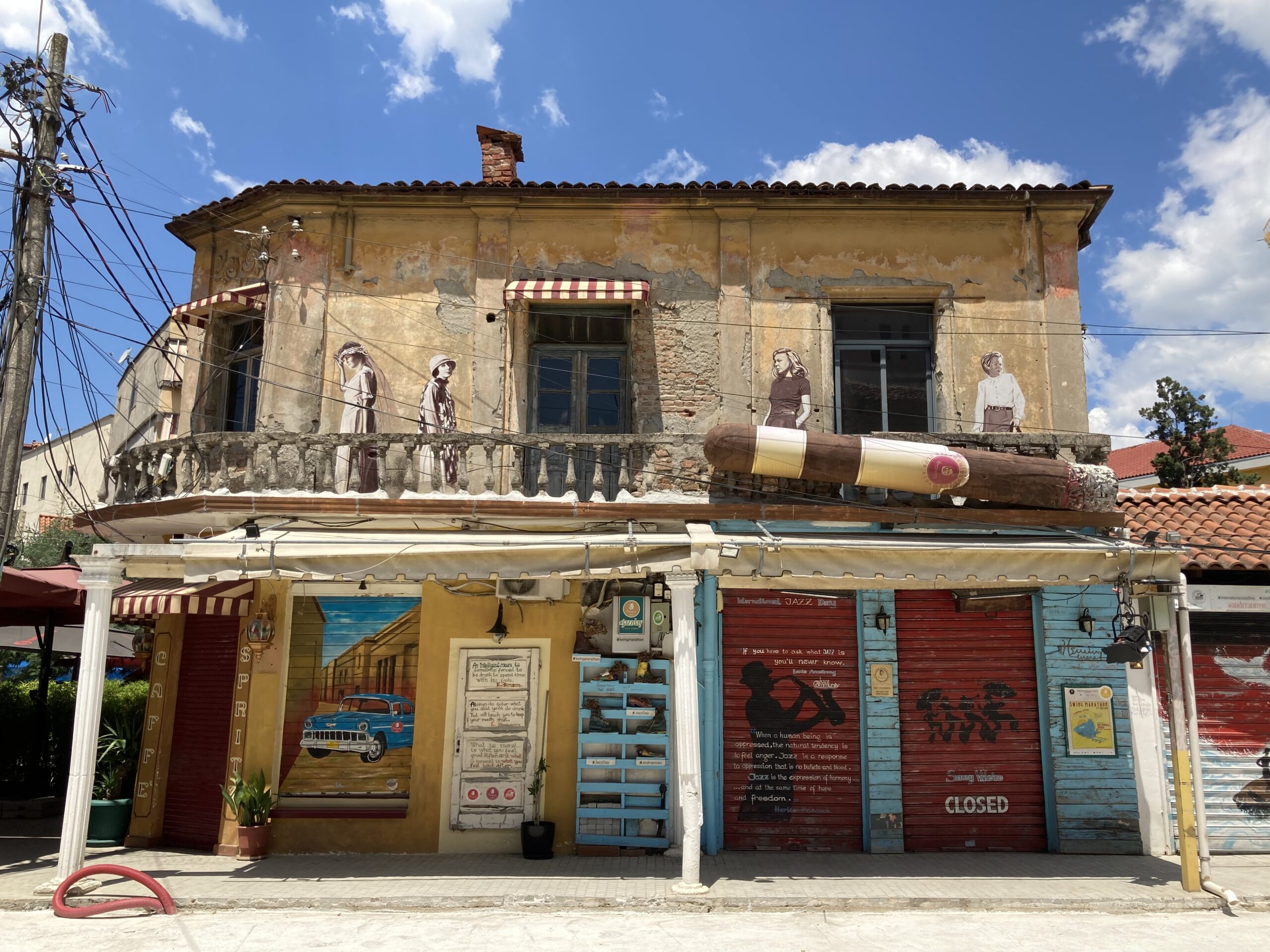
Of course, buildings of many sorts are not all that Tirana offers to its pedestrians, or should I say, night walkers? The city is home to a plethora of decent cafes and pubs, and a few clubs. The presence of many Western missionaries, mostly from the United States, makes it possible to find even some more Western-style (Irish, American etc.) pubs out there, and more variety when it comes to drinking spots is always welcome. We even ran into a street that was (for a single night) turned into a techno club! Sure, Albania receives a lot of attention for being “a Muslim” Balkan country but I truly hope that my writings covering it can somewhat tell people otherwise, by showing the true extent of the variety of its people and the diversity of the so-called “Muslim” countries at the same time. Drinking game here is pretty strong and people take their time to “dress up” their pubs and clubs so that they look their best even when they are not open for business. It is also interesting to note that Albania’s aspirations to become one with the “greater European community” is ever present in the urban landscape of Tirana, more so than anywhere else in the country. There are so many cafes and restaurants there that are simply named after European cities that I lost count. Our neighbourhood alone had establishments named after Berlin, Stockholm, and Oslo, and I have seen around ten more such city names scattered around the city, being used by various vendors.
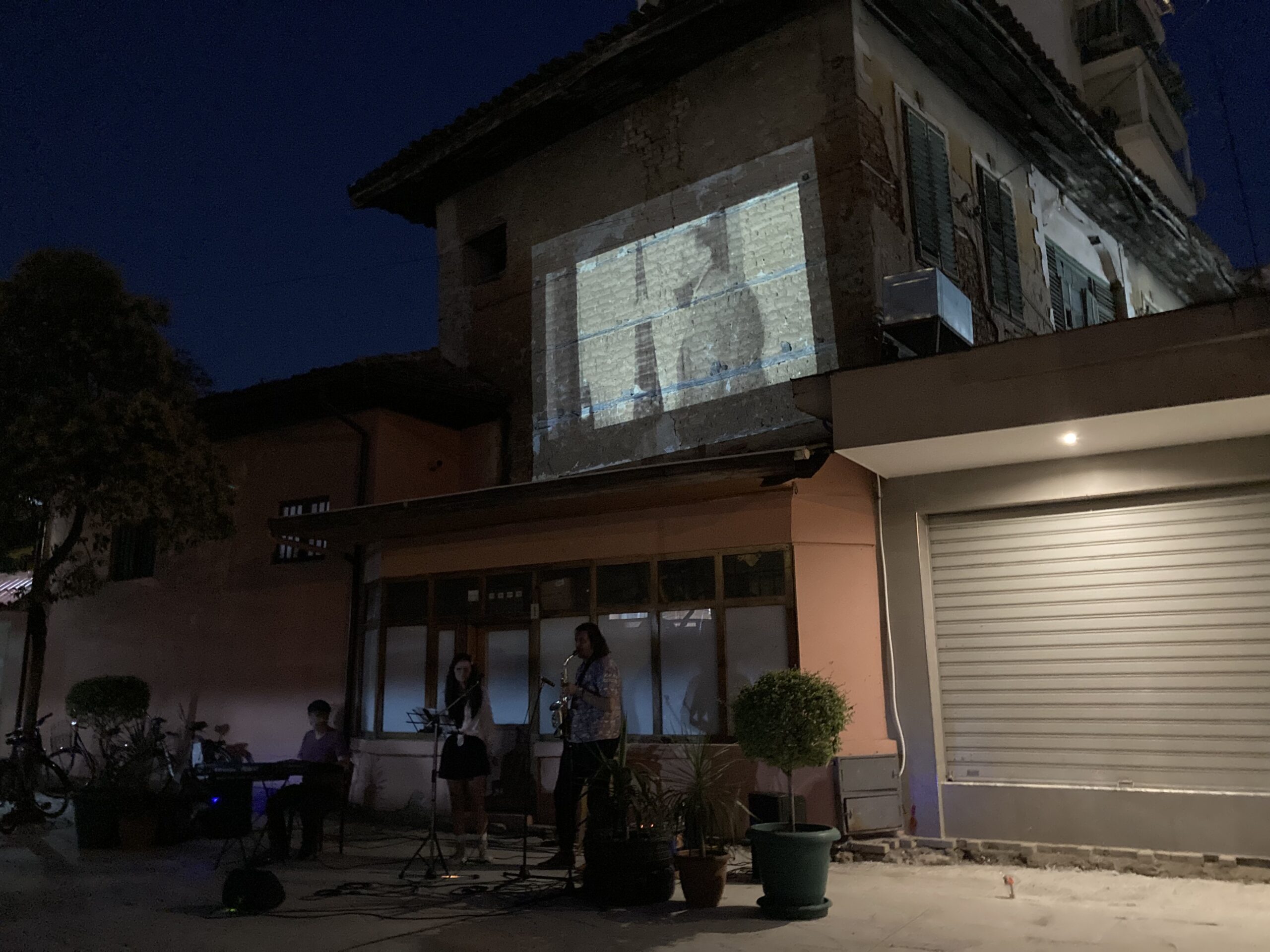
This one is taken from the jazz club that was photographed above, named the Hemingway Bar. We were lucky enough to visit it when there was an event going on, as part of an ongoing music festival of sorts that I unfortunately could not do much research on. Apparently, the festival has been going on for quite a few decades now, with its roots being firmly set in the communist times. Nevertheless, it was one of the best nights we have had in Albania thanks to this luck of ours, when we sipped perfectly mixed cocktails as we listened to some up and coming jazz bands of Albania! Make sure to check out the “Blloku” area if you are into such musical treats in a more frequent manner, as the clubs and pubs there have live music almost every night at summertime.
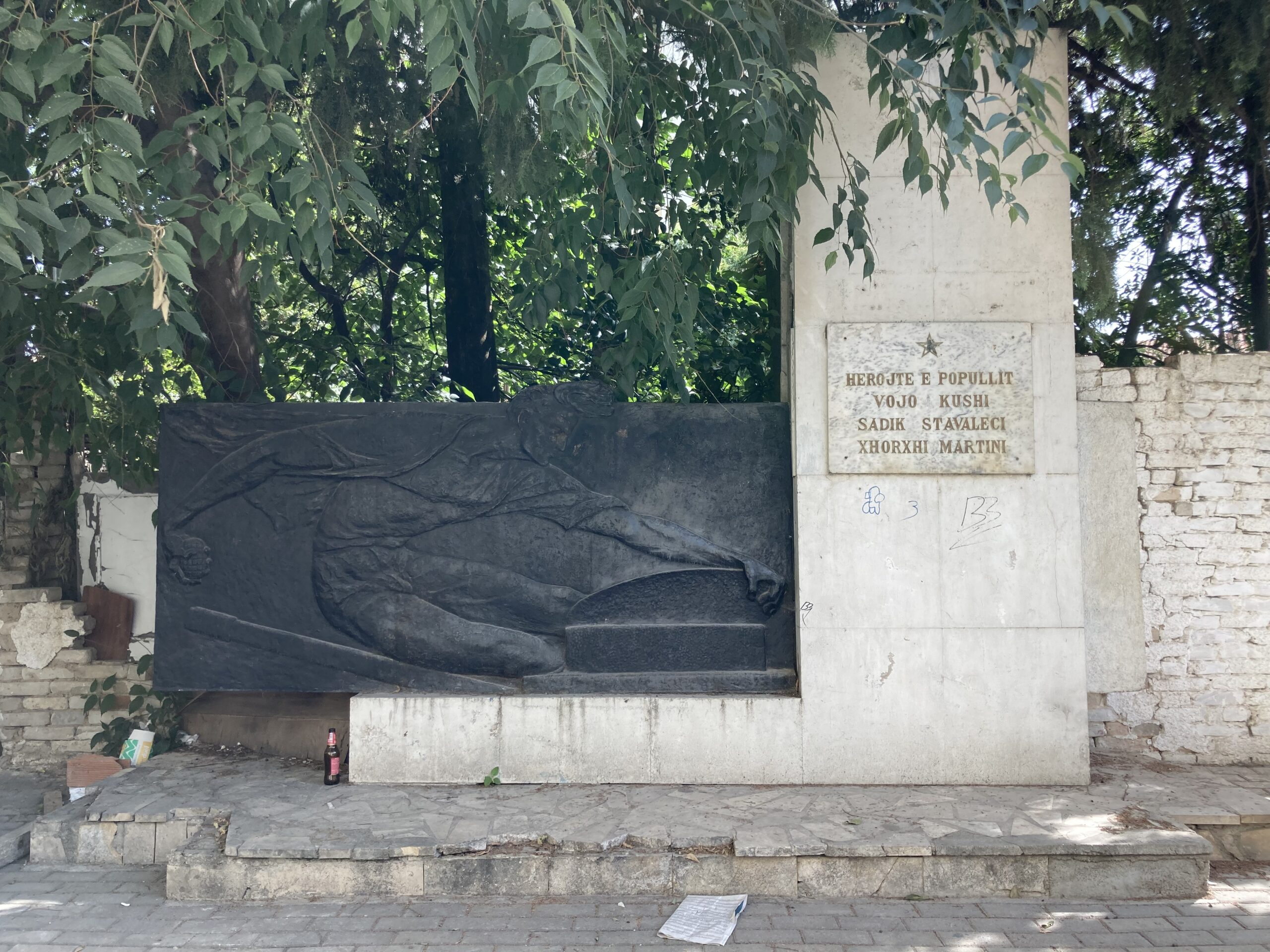
Though the city is going through some serious urban “renaissance,” for the better or worse, signs of its communist past can be seen all around, especially in the form of these often-untouched monuments to the former “heroes of people.” They often lack an English translation, not that it is required by any means especially given the era and the place in which they were built. This, however, makes it hard to figure out to whom are they dedicated to in certain times. Photographed here is a random monument that I came across on my way to the Ministry of Defence (to fail to get into the Armed Forces Museum harboured in it, read more about it HERE) from the National History Museum.
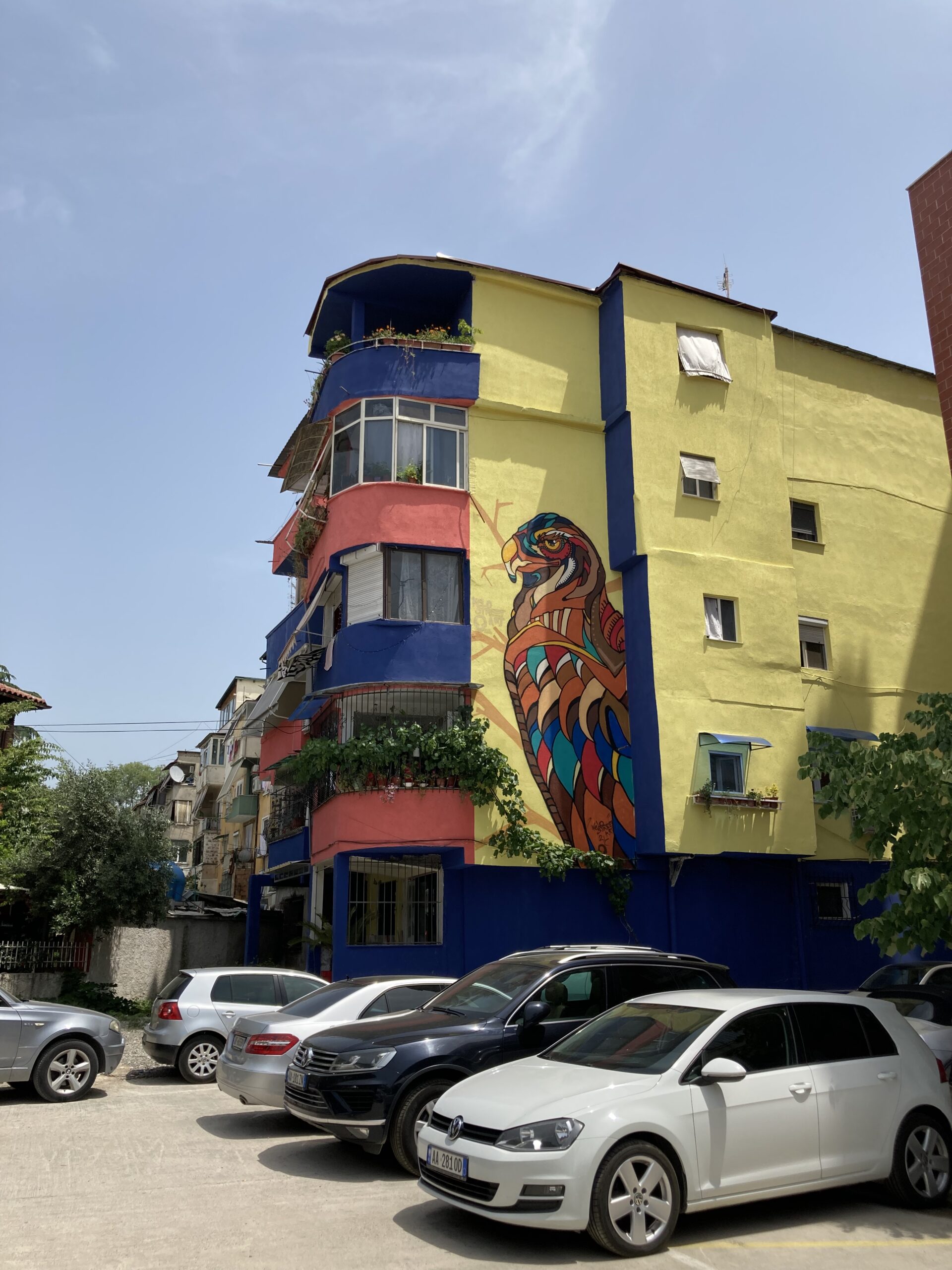
The word quirky came up a few times during this article, and that is for a good reason. Streets of Albania are full of interesting, often unexpected sights such as this one. Some of the “most boring” communist blocs are turned into literal art pieces by these decent graffities, city’s plethora of infrastructure (big and small) are mere canvases to its denizens’ creative urges, and its tree-lined streets are home to a festival or two almost every day, no matter whether they are something local or quite international. Art is everywhere in Tirana; it is present in the “cheapest” looking pub to luxurious restaurants that serve high-end Albanian cuisine and are found within the relatively recently renovated castle of the city. It can be seen atop buildings, on many different sides of apartments, and on the doors that lead to said apartments. It is on the ground, and in the sky in the form of gorgeous mountains that can be seen from all parts of the city with relative ease. The best part is, nothing about this “artsy” side of Tirana comes at the expense of its sincerity, meaning that all such creativeness seems to have thrived genuinely, without an urge to make the city look posh.
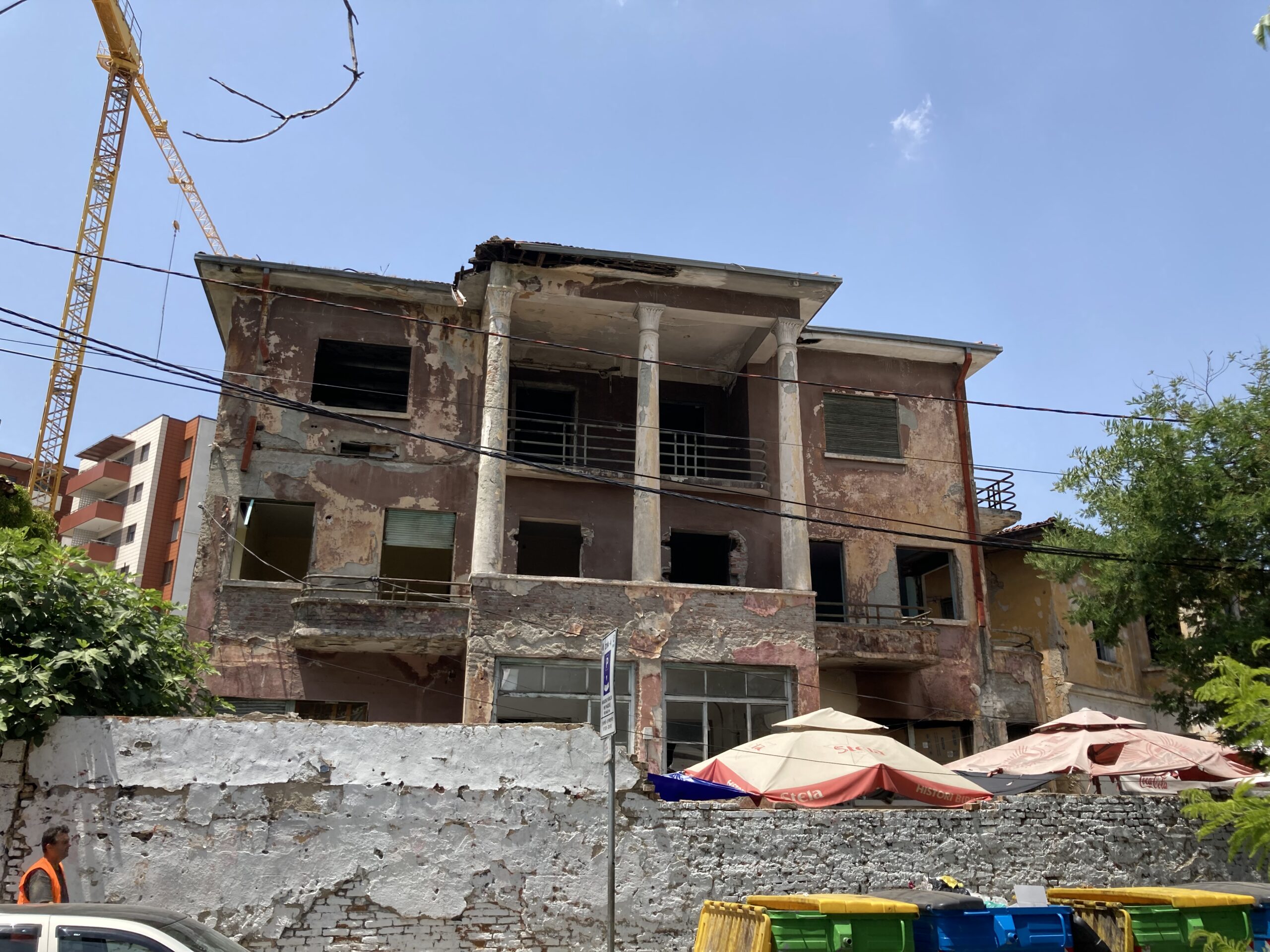
Though the city is undergoing maintenance and building projects, it is crucial to note that certain parts of it are still in need of urgent attention. Though I am personally attracted to such sites myself, having derelict buildings sitting idly in the middle of the city centre (the building photographed here is merely a hundred meters away from the main square of Tirana) is less than ideal for most tourists and locals alike. In this specific case, the building was used as a shelter by a Roma family, and they even operated a small market out of it. This adds to the spirit of the city, but it is one of the rarer occasions. In most cases, such buildings are as empty as it gets, which, I am sure, creates certain problems for the many denizens of the city.
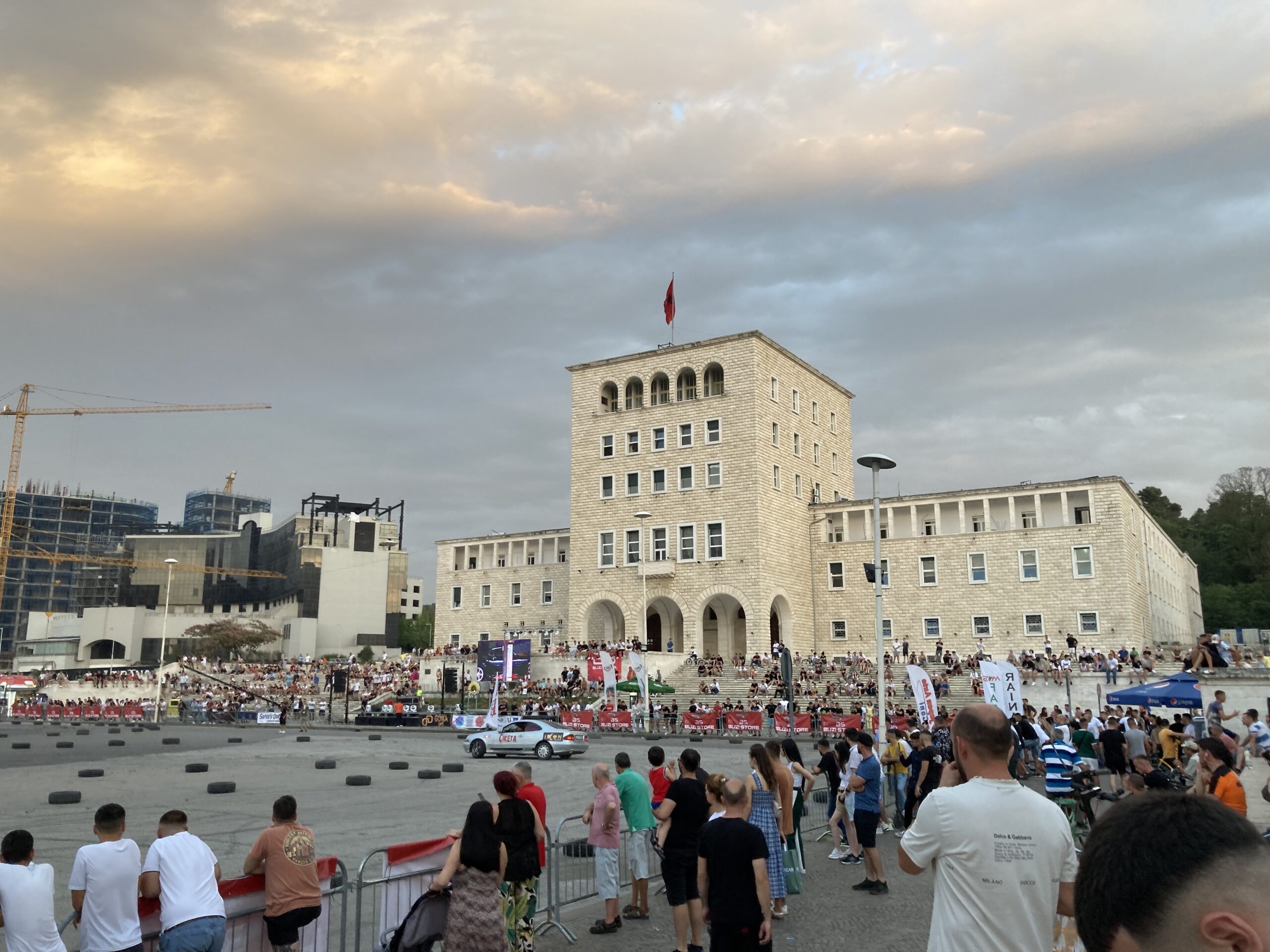
When I mentioned that the city was quite buzzing with events of all sorts, almost every day, I was not merely mentioning the more artistic and musical events and festivals. On our second to last night in Tirana, we came across, this… It is hard to describe what it was, and I could not find any English-speakers that night to tell me what exactly was going on. Simply put, many drivers, using modified older cars, showed off their drifting skills in a designated area that was built just that morning, right in front of the Polytechnic University of Tirana. At first glance, I assumed that it was a sponsored event, a competition of sorts. Later, I realized that volunteers (I assumed they were in fact volunteers, as they would raise their hands after an announcement in Albanian) would go to the centre of this custom ring to get into these cars, likely to experience what it feels like to drift in a car first hand. No matter what exactly it was, such a wonderful surprise concluded our day perfectly!
